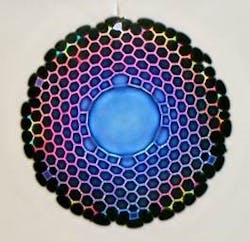The University of Southampton AirGuide Photonics program to investigate holey fiber
The University of Southampton's Optoelectronics Research Centre (ORC) says it will lead the new AirGuide Photonics program, which aims to develop and demonstrate hollow-core fiber, otherwise known as holey fiber. The £6.1 million program will be funded by the Engineering and Physical Sciences Research Council.
The glass core of conventional fiber limits the speed of light as it passes through and negatively affects other propagation aspects, which in turn limits fiber-optic network performance. The AirGuide Photonics effort will replace the glass core with air, or a vacuum, to create "light pipes" that will provide increasedbandwidth with lower latency. Guiding light through air, instead of through glass, improves power handling and overall light transmission quality, according to the university.
The AirGuide Photonics program will assemble more than 25 research organizations and industry partners, and experts from Southampton's ORC, to the effort, which will also explore potential use cases, including fast internet, space exploration, and laser-based manufacturing and bioengineering. According to ORC, the program will research the performance limits of hollow-core fiber technology, and develop manufacturing methods for interconnecting the new optical fibers to other conventional fiber types, as well as other lasers and optical components.
The AirGuide Photonics program will also create and demonstrate application-specific fibers based on the interests of project partners to enhance the research's effectiveness. Through the program, partners will demonstrate real-world uses of the technology, emphasizing its enabling properties.
"The ORC has been at the forefront of photonics for over 40 years," said Professor David Richardson, AirGuide Photonics program lead, and deputy director of the University's ORC. "Our new AirGuide Photonics program will continue to push the boundaries of what can be achieved with optical fibers and develop a disruptive technology that puts the UK at the forefront of optical technology."
Holey fibers – also known as photonic bandgap as well as crystal fibers – are not a new phenomenon; the ORC has investigated the technology previously (see "Extruded holey fibers give higher nonlinearity").
For related articles, visit the Optical Technologies Topic Center.
For more information on optical components and suppliers, visit the Lightwave Buyer's Guide.
